 Technology peripherals
Technology peripherals
 AI
AI
 Spot robot dog is on duty as a security guard in Pompeii! Not only to prevent tomb robbers, but also to do somersaults and 3D modeling
Spot robot dog is on duty as a security guard in Pompeii! Not only to prevent tomb robbers, but also to do somersaults and 3D modeling
Spot robot dog is on duty as a security guard in Pompeii! Not only to prevent tomb robbers, but also to do somersaults and 3D modeling
In addition to releasing dancing videos every year, Boston Dynamics’ robot dogs have been purchased by various industrial and security department customers to serve as patrol officers’ partners.
But it is used for the protection of archaeological remains. The Pompeii ruins in Italy in 2022 are the first.
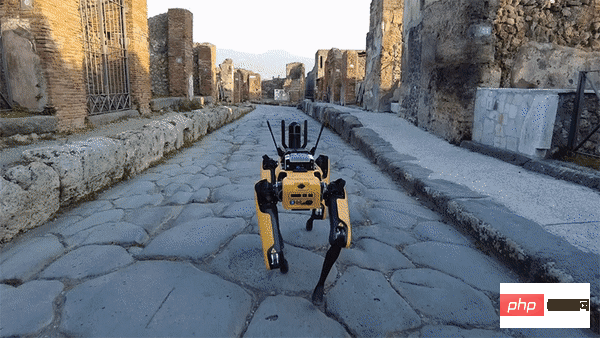
Robot dog is in trial operation at the Pompeii ruins
In June 2022, Boston Dynamics’ Spot robot dog began official trial operation at the Pompeii ruins.
The intelligent equipment of the 21st century AD patrols the ruins of the ancient city of the 1st century AD, which has a visual impact of the vicissitudes of life.
The company currently responsible for trial operation of the Spot robot dog in Pompeii is the Italian geographical mapping company Leica Geosystem. Among them, developer Valerio Brunelli, who operated the robot dog for the first time, said that this product is "a collection of contemporary cutting-edge technologies, which is suitable for use here." Visitors also witnessed the work site of the Spot robot dog, and the operator even let the robot dog face the tourists. After somersaulting, he lay low and acted cute.
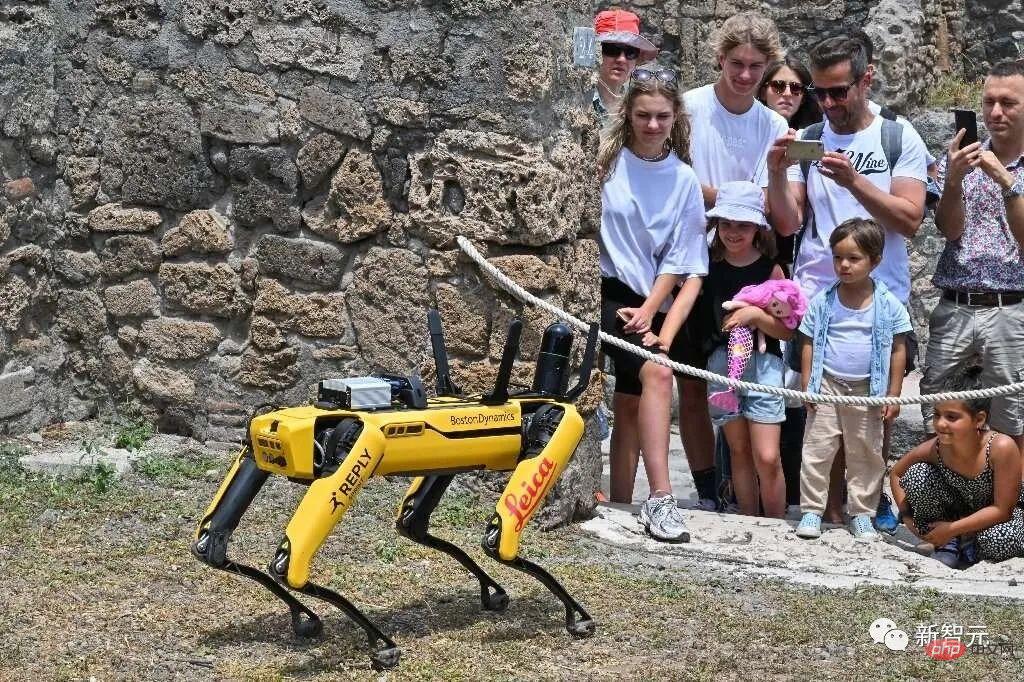
The current mission of the Spot robot dog in Pompeii is to patrol and inspect areas of the Pompeii ruins that are difficult to reach manually, collect various environmental data, and automatically prompt the operator about the ruins Various abnormal situations.
The price of Boston Dynamics’ Spot robot dog to the Italian government is US$75,000. Italian officials have not yet decided whether to finalize the purchase.
The Spot robot dog model currently in trial operation in Pompeii City weighs 70 kilograms and is half the size of an adult golden retriever. After being modified by Leica Geosystem, the Spot robot dog used for patrols not only has 360-degree panoramic detection capabilities, but can also instantly generate accurate 3D model maps after scanning the surrounding environment.
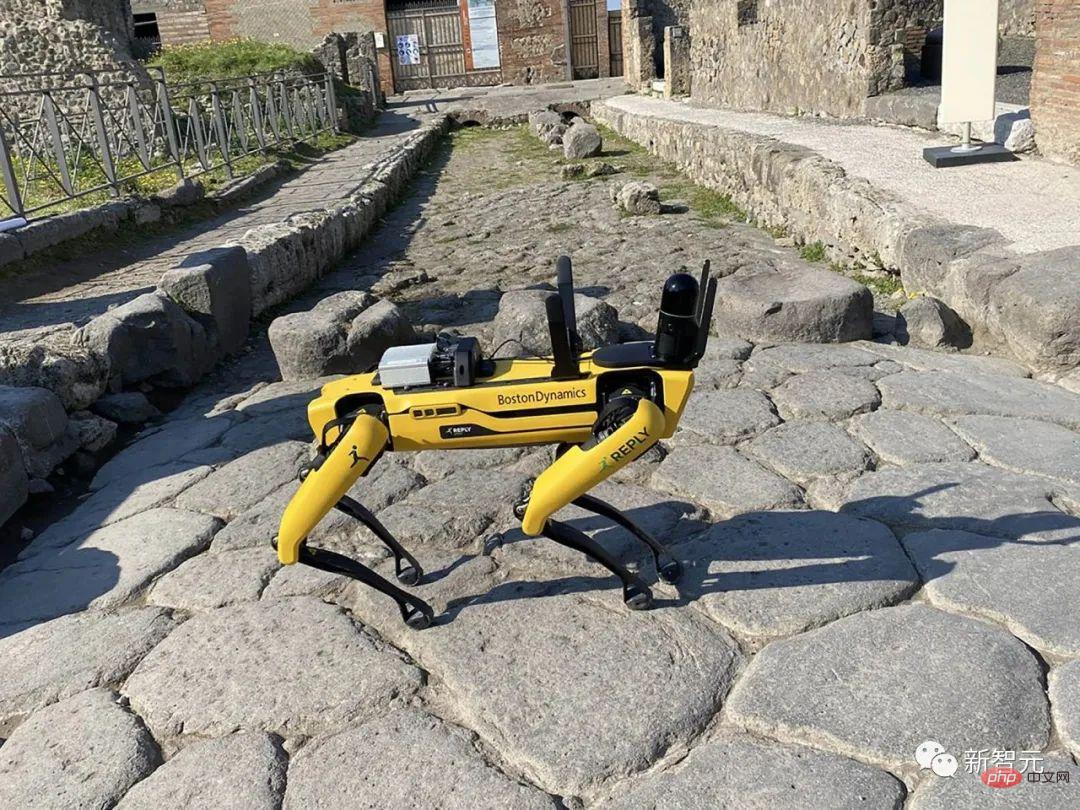
The Spot robot dog with such capabilities can not only easily travel through gravel, ruins, narrow paths, and narrow underground tunnels like a real dog, but also can move in real time. Survey and map accurate panoramic terrain and feature maps, and detect subtle damage and weathering conditions of heritage building structures. These functions not only allow managers who monitor sites every day to discover changes in building protection that were previously difficult to detect. The ability to generate and transmit 3D mapping models of sites in real time also significantly reduces the workload of the archaeological community and the negative impact of destructive excavations.
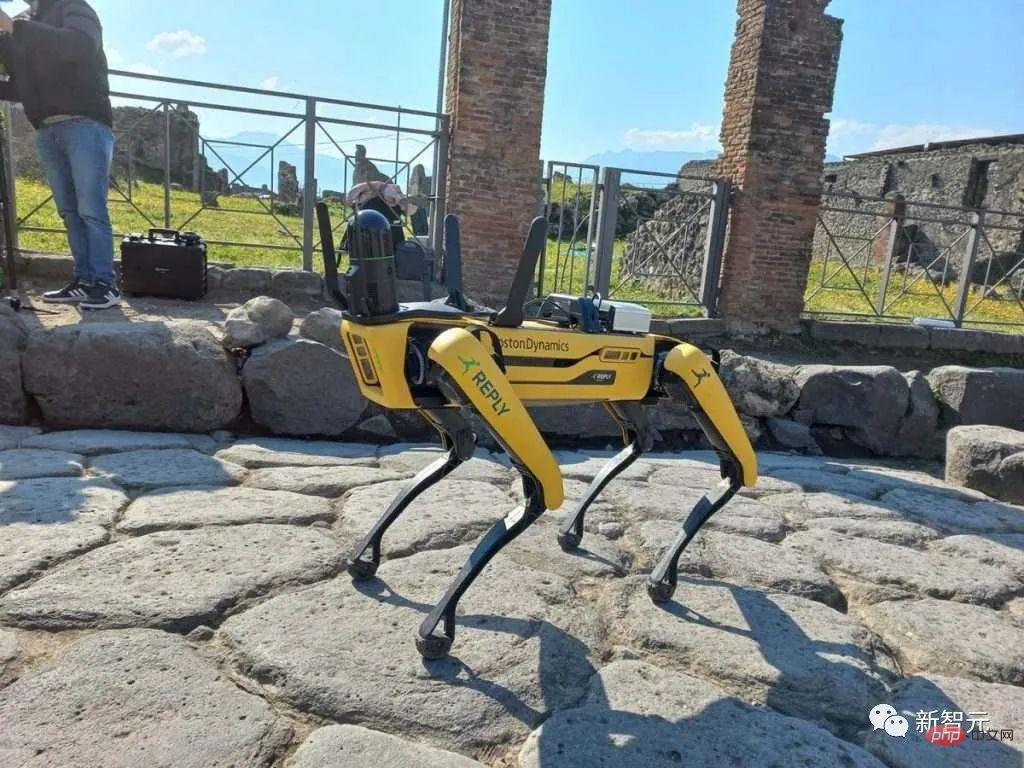
The robot dog becomes the nemesis of tomb robbers
One of the important tasks of the robot dog Spot is to survey the tunnels secretly dug by cultural relic thieves.
The ruins of the ancient city of Pompeii cover an extensive area, approximately 400,000 square meters, including above-ground architectural remains and underground ruins, as well as densely populated caves in the ruins.
Digging holes in cultural relic sites is a way for cultural relic dealers and tomb robbers to make a fortune. Faced with the temptation of huge black interests, thieves who dig holes will naturally not break ground in accordance with construction safety standards. The risk of collapse of the hole is extremely high.
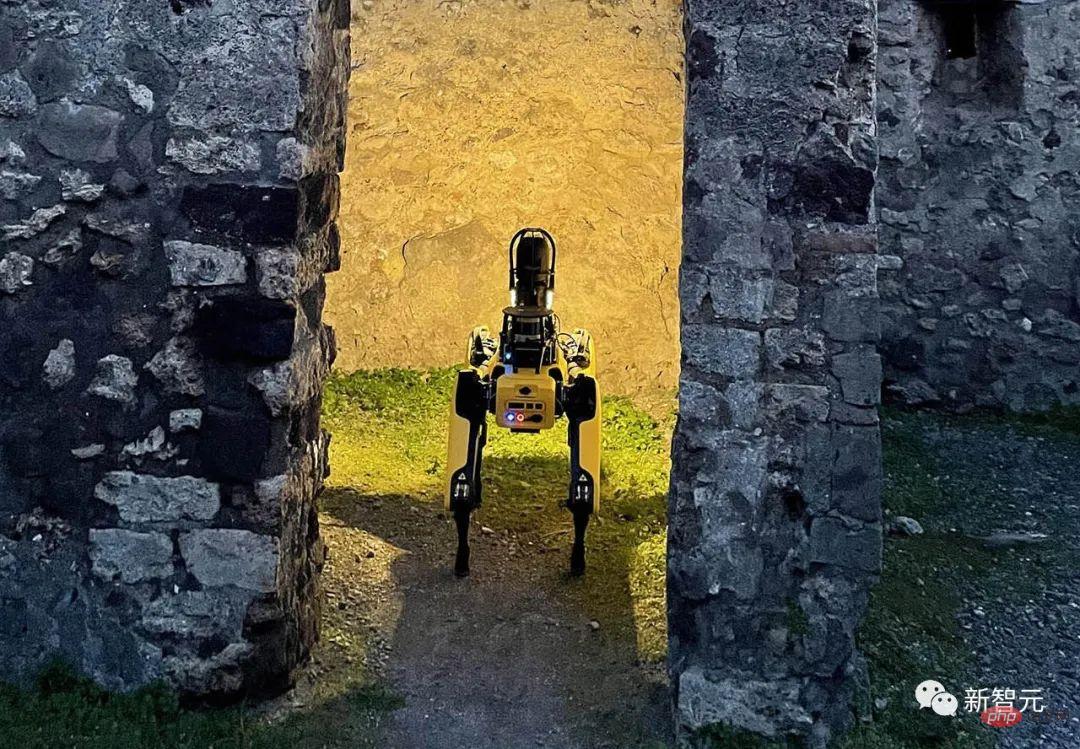
According to the "Guardian" report, due to Italian law enforcement agencies' crackdown on art smuggling, the number of excavations at the Pompeii site dropped sharply after 2012.
However, this does not eliminate all excavation crimes. There are still new tomb robbers who continue to dig holes in the ruins. Cave theft not only destroys the ruins, but also jeopardizes normal archaeological surveys. Because cultural relic thieves will not copy the excavation drawings to legitimate archaeological teams, when the archaeological team excavates a site that has been stolen before, they are likely to dig holes and trigger landslides. These stolen holes are difficult to detect by human supervisors. Therefore, Gabriel Zuchtriegel, the person in charge of the management of the Pompeii ruins, said, "The use of robot dogs to patrol will allow monitoring personnel to carry out daily operations at a faster speed and with complete safety guarantee."
Robot dogs patrol around the clock to prevent The ruins are gradually being destroyed
Robot dogs are actually particularly suitable for patrolling and monitoring ruins like Pompeii, because in addition to cave robbers who never consider safety risks, legal archaeological exploration and tourist flow also bring protection to the ancient city ruins pressure.
In 79 AD, Mount Vesuvius erupted, and Pompeii, which had 20,000 residents at that time, was buried. At that time, the Roman Empire in the Flavian era had complete archival records and basic administrative mechanisms.
In other words, since ancient times, almost all Europeans have known about this matter and where they can go for archeology. Formal large-scale archaeological excavations began in 1592. Except for tomb robbers, regular large-scale excavation of Pompeii continued from the end of the 16th century until 1960, when it was finally stopped by the Italian government at the time. Because the ancient city ruins have been extensively damaged due to hundreds of years of uninterrupted excavation, there is a risk of total collapse.
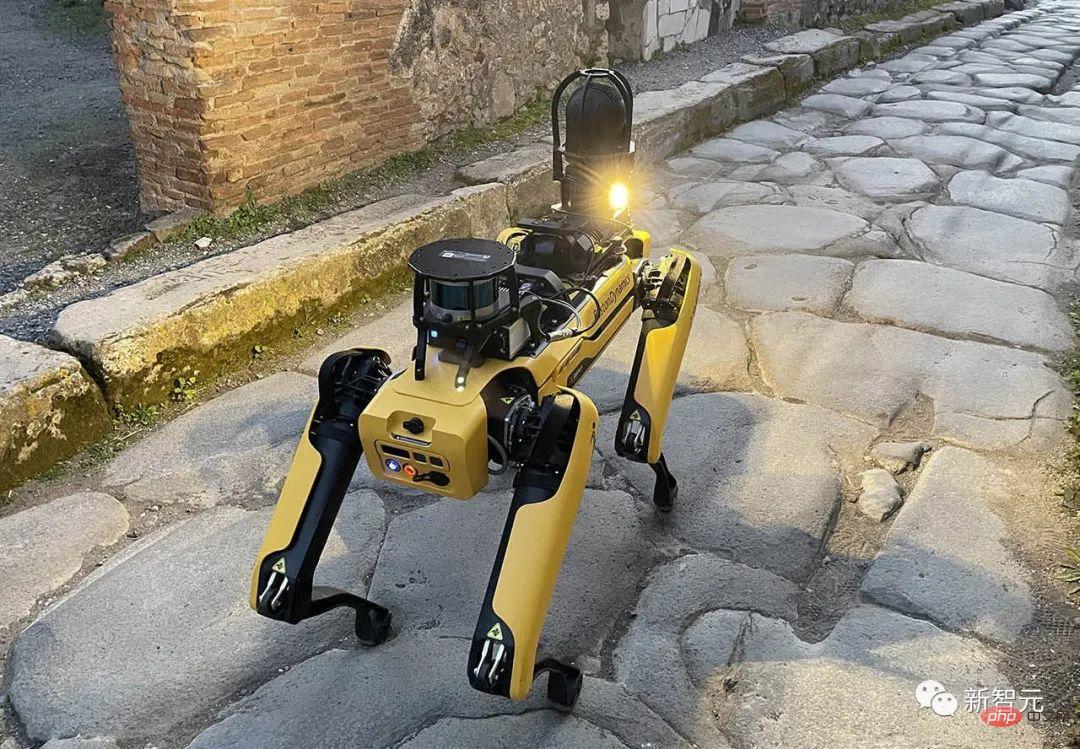
Even though large-scale excavations have ceased, regulated and controlled small-scale archaeological excavations continue. For example, in 2018, all the skeletons of escapees who were buried during the volcanic eruption were unearthed, in 2020, actual traces of ancient food stalls were unearthed, and in 2021, the tombs of wealthy slaves were unearthed.
Moreover, the tourism industry in southern Italy now relies heavily on the ancient city of Pompeii. The annual flow of millions of people puts more pressure on the maintenance of the ruins than dealing with tomb robbers. Because of these conditions, the Italian government declared a "state of emergency management" for the Pompeii ruins in 2008.
After the collapse of ancient buildings such as the famous Colosseum ruins in 2013, UNESCO also released an investigation report stating that even under regulations, the archaeological team and tourists had caused erosion and damage to the ruins. The damage has put the excavated ruins at risk of collapse, "putting the entire Pompeii ruins in danger."

Spot robot dog can play a big role in this situation. In conjunction with manual monitoring robot dogs, in the "Smart Pompeii" project to protect the ruins, the structural strength of the ruins and the damage status of various excavated areas are continuously and dynamically monitored around the clock, allowing the management agency to grasp the status of the existing buildings in the ruins in real time.
The above is the detailed content of Spot robot dog is on duty as a security guard in Pompeii! Not only to prevent tomb robbers, but also to do somersaults and 3D modeling. For more information, please follow other related articles on the PHP Chinese website!

Hot AI Tools

Undresser.AI Undress
AI-powered app for creating realistic nude photos

AI Clothes Remover
Online AI tool for removing clothes from photos.

Undress AI Tool
Undress images for free

Clothoff.io
AI clothes remover

AI Hentai Generator
Generate AI Hentai for free.

Hot Article

Hot Tools

Notepad++7.3.1
Easy-to-use and free code editor

SublimeText3 Chinese version
Chinese version, very easy to use

Zend Studio 13.0.1
Powerful PHP integrated development environment

Dreamweaver CS6
Visual web development tools

SublimeText3 Mac version
God-level code editing software (SublimeText3)

Hot Topics
 1359
1359
 52
52
 Yunshen releases industry application flagship robot dog Jueying X30
Oct 11, 2023 pm 09:45 PM
Yunshen releases industry application flagship robot dog Jueying X30
Oct 11, 2023 pm 09:45 PM
On October 9, Yunshen Technology released the "Jueying X30" quadruped robot. As a new generation of industry-level products for industry applications, it is targeted at power stations, factories, pipe gallery inspections, emergency rescue, fire investigation, future scientific research, etc. Multi-field core demands bring the world's leading industry capabilities: original integrated sensing capabilities, taking the lead in Asia to achieve rapid and stable obstacle crossing in changing environments, up and down hollow industrial stairs, and all-weather autonomous inspections day and night, breaking more scene restrictions, It can respond quickly to unexpected tasks; for the first time in Asia, the operating temperature range of a quadruped robot has been extended to -20°C to 55°C, significantly broadening the application areas and seasons; it has its own real-time monitoring system and emergency response system to ensure smarter operations. Safe and efficient. Seventeen departments including the Ministry of Industry and Information Technology issued the "Machine
 Breathing fire and dancing at the same time, the latest skill of the robot dog has become popular all over the Internet! Netizens call it 'True Hot Dog'
Jun 28, 2023 pm 06:20 PM
Breathing fire and dancing at the same time, the latest skill of the robot dog has become popular all over the Internet! Netizens call it 'True Hot Dog'
Jun 28, 2023 pm 06:20 PM
After Musk invented the flamethrower, now even the robot dog can learn to breathe fire. Stand up, aim, and breathe fire, a whole set of actions in one go - not only that, you can even "tap dance" while breathing fire: This magical video quickly gained 7,000+ views on Reddit. Some netizens joked: Thank you Reminds me to revisit Black Mirror. Some netizens suggested renaming it hot dog: "I know someone must call it that." So, what does this "hot dog" look like? What does a fire-breathing robot dog look like? This fire-breathing robot dog is called Themonator and comes from a company called ThrowFlame. According to the official website, its weight is about 16kg (37lbs) and its size is about 76×51×51
 Stand up, don't kneel! A stick helps the robot dog complete the evolution from 'dog' to 'human'. The key is also to adapt to different brands of dogs
Apr 14, 2023 pm 09:49 PM
Stand up, don't kneel! A stick helps the robot dog complete the evolution from 'dog' to 'human'. The key is also to adapt to different brands of dogs
Apr 14, 2023 pm 09:49 PM
If you have money and want to buy a robot, should you buy a four-legged robot? Or is it better to buy a bipedal robot? The four-legged robot is like a pet and can even be taken out for a walk; the two-legged robot is more like a partner and can do housework for you in the future. Each seems to have its own merits, is it hard to decide? As an adult, Digest’s answer is of course: Last week, at the 2022 IEEE/RSJ International Conference on Intelligent Robots and Systems (IROS2022) held in Kyoto, Japan, speakers from Worcester Polytechnic Institute (WPI) and Shanghai University of Science and Technology Researchers have proposed a new solution. Let the quadruped robot evolve into a biped robot when you want to land on all fours
 Boston Dynamics launches new version of humanoid robot Atlas, powered by pure electricity
Apr 19, 2024 am 11:46 AM
Boston Dynamics launches new version of humanoid robot Atlas, powered by pure electricity
Apr 19, 2024 am 11:46 AM
We have witnessed the birth of a new generation of humanoid robot Atlas. As soon as the video of the new robot came out, we immediately understood why Boston Dynamics retired the old version of Atlas that had been developed for more than ten years - a humanoid robot that should now have more flexibility than humans. The new robot integrates the most advanced machine learning technology and can autonomously learn to improve its own actions and reactions. All this shows that robotics technology is advancing rapidly, and future robots will be more flexible and intelligent. Lying calmly on the laboratory floor, the Atlas robot looks impressive. But suddenly the joints were reversed and he stood up, and the clever rotation of his legs effectively accomplished something that humans could not accomplish. This amazing transformation method allows robots to achieve things that humans cannot do
 Can a robot dog learn to walk in one hour? Mimicking animal instincts, research published in Nature sub-journal
Apr 09, 2023 pm 07:21 PM
Can a robot dog learn to walk in one hour? Mimicking animal instincts, research published in Nature sub-journal
Apr 09, 2023 pm 07:21 PM
According to foreign media Tech Xplore, the Max Planck Institute for Intelligent Systems (MPI-IS) in Stuttgart, Germany, invented a small four-legged robot dog named Morti. walk. The paper "Learning Plastic Matching of Robot Dynamics in Closed-loop Central Pattern Generators" illustrating this technology was published in the journal Nature Machine Intelligence on July 18 Published on, the first author of the paper is Felix
 Spot robot dog is on duty as a security guard in Pompeii! Not only to prevent tomb robbers, but also to do somersaults and 3D modeling
Apr 08, 2023 pm 01:41 PM
Spot robot dog is on duty as a security guard in Pompeii! Not only to prevent tomb robbers, but also to do somersaults and 3D modeling
Apr 08, 2023 pm 01:41 PM
In addition to releasing dancing videos every year, Boston Dynamics’ robot dogs have been purchased by various industrial and security department customers to serve as patrol officers’ partners. However, the Pompeii ruins in Italy in 2022 are the first to be used for the protection of archaeological remains. Robot dog starts trial operation at Pompeii ruins In June 2022, Boston Dynamics’ Spot robot dog began official trial operation at the Pompeii ruins. Intelligent equipment from the 21st century AD patrols the ruins of an ancient city from the 1st century AD, which is quite visually impactful. The company currently responsible for trial operation of the Spot robot dog in Pompeii is the Italian geographical mapping company Leica Geosystem. Among them, developer Valerio Brunelli, who operated a robot dog for the first time, said that the product
 Train your robot dog in real time with Vision Pro! MIT PhD student's open source project becomes popular
Mar 11, 2024 pm 05:43 PM
Train your robot dog in real time with Vision Pro! MIT PhD student's open source project becomes popular
Mar 11, 2024 pm 05:43 PM
VisionPro has another hot new way to play, and this time it is linked with embodied intelligence~ Just like this, the MIT guy used VisionPro's hand tracking function to successfully achieve real-time control of the robot dog. Not only can actions such as opening a door be accurately obtained: there is almost no delay. As soon as the demo came out, not only did netizens praise Goosemeizi, but also various embodied intelligence researchers became excited. For example, this prospective doctoral student at Tsinghua University: Others boldly predict: This is how we will interact with the next generation of machines. How to implement the project, the author Younghyo Park has open sourced it on GitHub. Relevant apps can be downloaded directly from VisionPro’s AppStore. Use VisionP
 CMU robot dog, standing upside down and going downstairs! Release is open source
Oct 04, 2023 am 11:21 AM
CMU robot dog, standing upside down and going downstairs! Release is open source
Oct 04, 2023 am 11:21 AM
There are really too many tricks for robot dogs - but I was still surprised by some today. The latest results from CMU allow dogs to directly learn: double body length high jump, long jump, handstand and even handstand down the stairs. Not much to say, just show the picture to experience it: △This is the long jump △This is the high jump △Handstand The content that Sahuan'er needs to rewrite is: △Going down the stairs while standing upside down has to be said, especially the "struggle" in the high jump part makes the dog particularly soulful. In addition to these s operations, CMU also released several parkour videos, which are completely autonomous. It's such a refreshing feeling to step on the ridge, pass through the gap, and cross the slope. Even if there are some "mistakes" in the middle, it will not affect its immediate progress. Xiao Mouse even arranged a stress test. The results Of course it’s “passed” ~ the most powerful



